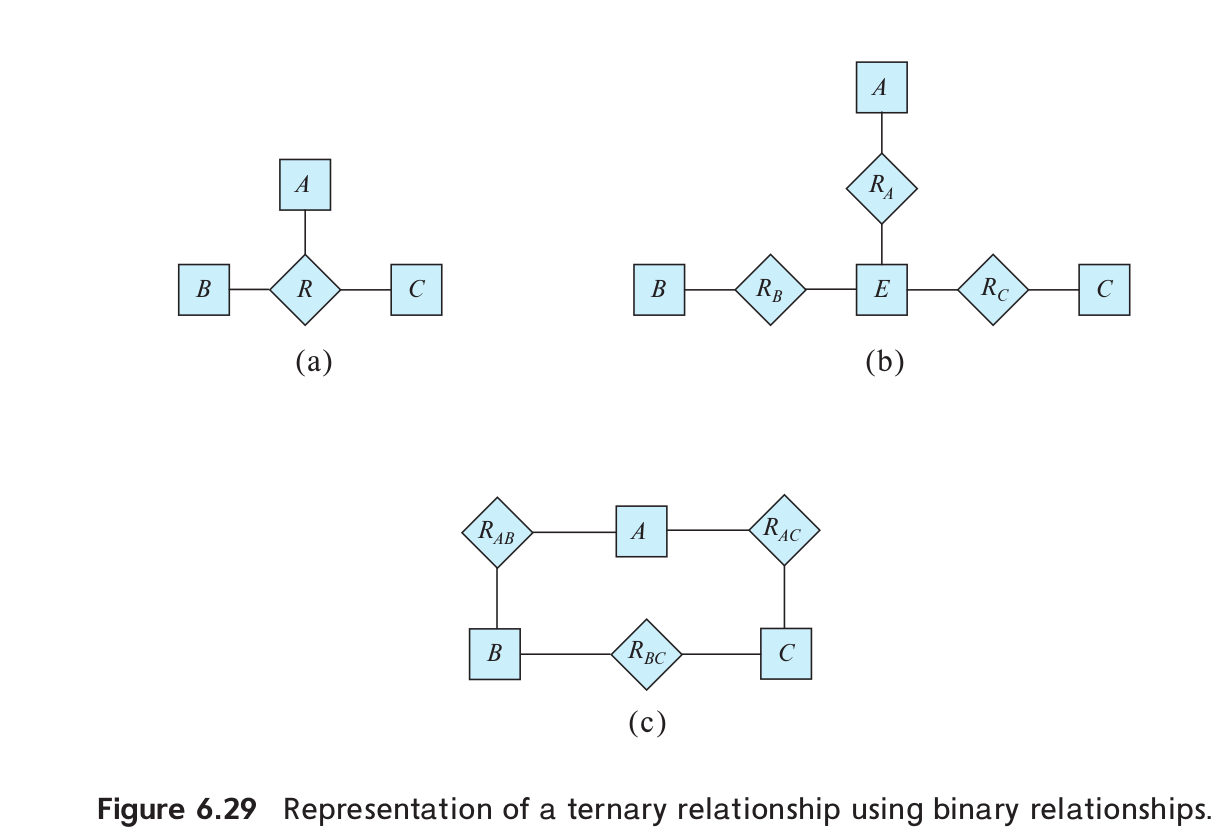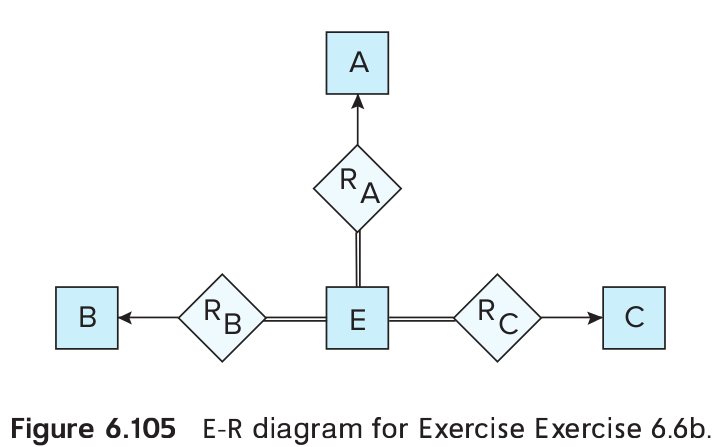Consider the representation of the ternary relationship of Figure 6.29a using the binary relationships illustrated in Figure 6.29b (attributes not shown).
a. Show a simple instance of ,,,,,, and that cannot correspond to any instance of , , , and .
b. Modify the E-R diagram of Figure 6.29b to introduce constraints that will guarantee that any instance of ,,,,,, and that satisfies the constraints will correspond to an instance of , , , and .
c. Modify the preceding translation to handle total participation constraints on the ternary relationship.

a. Let , , , , , , . We see that because of the tuple , no instance of ,,, and exists that correspond to ,,, and
b. See Figure 6.105. The idea is to introduce total participation constraints between and the relationships , , so that every tuple in has a relationship with ,, and .

c. Suppose totally participates in the relationship , then introduce a total participation constraint between and , and similarly for and .